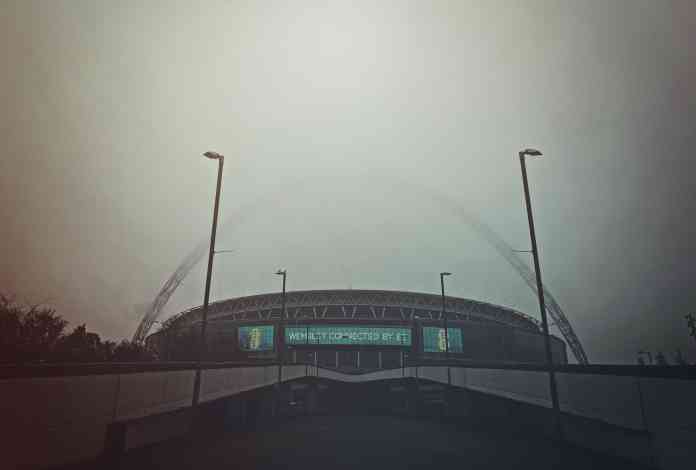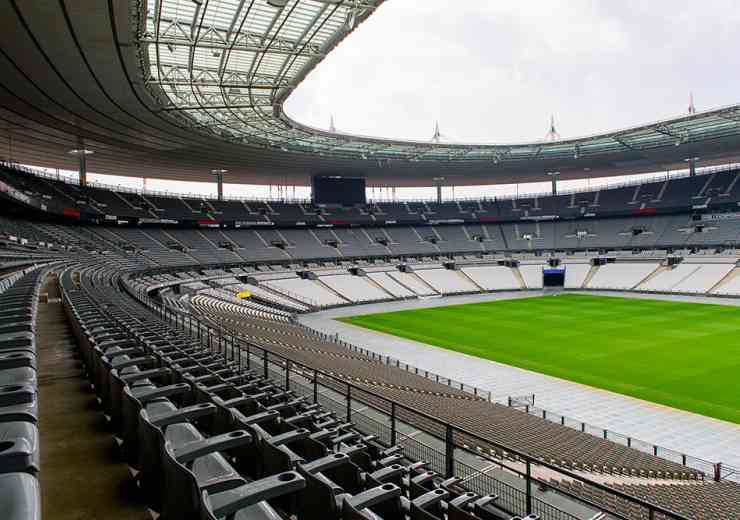
Stadium security: why terrorism must be kept on the agenda
After many months of misery, professional sports clubs and supporters were dealt another crushing blow in September. While it had seemed that there was finally light at the end of the tunnel, with spectators set to return to stadiums from the 1 October – albeit in significantly reduced numbers – these hopes were dashed following the announcement of a range of new coronavirus restrictions.
While this is hugely disappointing for everyone involved, particularly given the last-minute nature of the U-turn, the delay to fans’ return does at least provide stadium managers and event organisers with more time to ensure that every aspect of safety and security is covered prior to re-opening.
In the wake of the Covid-19 pandemic, there has understandably been massive emphasis on preventing the spread of the virus through social distancing measures. In preparation for the 1 October, venues had made comprehensive changes to enable those in the crowds to keep at least two metres apart from one another. However, with all of our energies currently channelled into keeping the pandemic under control, we run the risk overlooking the other serious threats to fan safety.
Growing terror risk
In recent years, stadiums and arenas across the world have become key targets for terrorist attacks, due to the regular heavy footfall in and around the venue and often high-profile nature of their events. In 2017, Manchester suffered a devastating attack at its arena, in 2016, a football stadium in Istanbul was hit by two simultaneous bombings, and in 2015 we saw co-ordinated attacks on the national football stadium and a concert venue in Paris.
In the UK, the Manchester Arena incident tragically highlighted the vulnerability of large entertainment venues, and led to government plans for new legislation that would require venue operators to provide greater protection from the threat of terrorism. Unfortunately, the consultation for this legislation has been delayed as a result of coronavirus. Meanwhile, a public inquiry has recently begun to investigate the circumstances of the attack. It will report and make recommendations in due course.
With no new laws in place, and the number of spectators permitted into a venue potentially as low as 1,000 when stadiums do eventually re-open, there is the distinct possibility that the risk of terrorist activity will be dangerously underestimated. Given that the Home Secretary warned of the ‘growing’ threat of ‘lone wolf’ terrorists in June this year, this could have terrible consequences and is something we must make sure to avoid.
The good news is that carefully planned anti-terror measures can also help with social distancing, ensuring that fans, staff and players are all as safe as possible, and free to enjoy the sports they love after an achingly long wait.
Assessing the threat
Best practice for stadium security of course begins with a thorough risk assessment. Only by identifying potential hazards and threats can they be effectively minimised. All stadium managers will undoubtedly have carried out a risk assessment for Covid-19, which will have resulted in significant changes to the ways in which they will operate upon re-opening.
Consequently, any pre-existing anti-terror risk assessment may well now be out of date, and so they should undertake a new assessment taking into account any changes to the current security climate, as well as how the pandemic and social distancing may have impacted a terrorist’s intentions or capabilities.
Once the threats have been identified, it must then be established what or who needs to be protected, and whether there are any particular vulnerabilities. Priorities should fall under the categories of people (staff, contractors, spectators, visitors), physical assets (the fabric of the stadium and its contents), information (electronic and non-electronic data), and processes (supply chains and procedures), but, aside from people, what is most important will likely vary from venue to venue.
Given the financial strain that coronavirus has placed on the industry, security priorities may have now shifted. For example, it might be more crucial to ensure no damage to physical assets, as the repair costs would now be prohibitive.
Once these steps have been completed, the appropriate measures to reduce risk can then be successfully be implemented.
Perimeter security
Recent years have seen a sudden rise in vehicle as a weapon attacks; according to the University of Maryland’s global terrorism tracker, 152 of the 183 hostile vehicle attacks that have occurred globally since the 1970s have happened since 2010. This is largely because heavy goods vehicles are relatively easy to acquire, making them one of the most dangerous weapons readily available in countries that have strict firearm controls.
Although the numbers of fans will likely be strictly limited, reducing the amount of crowding inside a venue, the two-metre social distancing rule has the potential to result in much longer queues of people outside a stadium waiting to enter. These people would be extremely vulnerable to hostile vehicle attacks without the right physical security solutions in place.
While some stadiums do now have permanent hostile vehicle mitigation measures installed around their perimeters, social distancing procedures may mean that the areas requiring protection have changed. Stadium managers may therefore wish to consider deploying temporary, surface-mounted barriers in key new locations where queueing might now occur.
A range of products are now available that have been specifically designed to prevent vehicle attacks and can be deployed by just a few people in a matter of hours with no machinery. These lightweight systems can either be rented or bought, making them a cost-effective option, and their compact, modular design means that they are easy to transport and store as needed.
The barriers are designed to allow people to flow in and out of an area with minimal disruption, which prevents the unnecessary build-up of crowds. Vehicle access points can also often be added to allow authorised emergency service vehicles to gain access in just minutes in the event of an emergency.
Access control
A well-controlled reception area is essential when it comes to both preventing a terror attack and facilitating social distancing. For optimum security, access points should be kept to a minimum, in order to maintain order, and there should be clear boundaries between the public and private areas of the building. Investing in good quality access controls such as magnetic swipe ID cards will help to ensure that only authorised people have access to sensitive areas.
Reduced visitor numbers will have the benefit of making security significantly easier to manage, with it possible to conduct more comprehensive checks on each visitor. The random screening of bags and body searches upon entry to a venue are highly effective deterrents, with organisers within their rights to refuse entry to anyone who doesn’t agree to be searched. With smaller numbers of people attending events, security personnel can pay closer attention to each visitor, which may help them to pick up on suspicious behaviour that would be missed in normal times.
Importantly, access control shouldn’t just start upon entry to the building; stadium managers should also consider traffic and parking controls outside the venue. In order to minimise the potential risk from vehicle bombs, all vehicles should be kept at a safe distance – ideally at least 30 metres from any buildings. Those requiring access, such as suppliers, should be identified in advance and checked thoroughly before being allowed in.
In light of the pandemic, and the recent string of tragedies, there will be an unprecedented amount of pressure on event organisers to ensure they are doing all they can to protect attendees and the wider public when they do eventually re-open. Event security parameters are constantly in flux and there is no one-size-fits-all solution.
Fortunately, event organisers have a wide range of options available to counter threats. By diligently assessing the level of risk for each venue, personnel can ensure they install the ideal combination of measures to help prevent incidents and enable social distancing.
Written by Iain Moran, director at ATG Access.
















